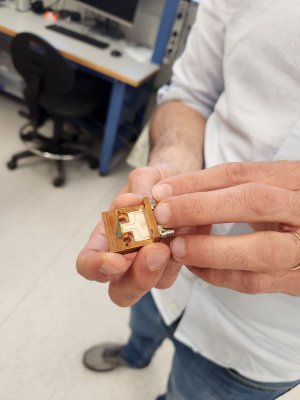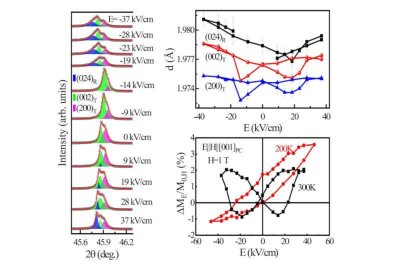Researchers report unusual motion across a layered magnetic material tied to changing its electron spin
A team of researchers from the DOE/Argonne National Laboratory and U.S. additional laboratories and universities have reported a mechanical response across a layered magnetic material tied to changing its electron spin. This response could have important applications in nanodevices requiring ultra-precise and fast motion control.
A little over a century ago, physicists Albert Einstein and Wander de Haas reported a surprising effect in ferromagnets: if you suspend an iron cylinder from a wire and expose it to a magnetic field, it will start rotating if you simply reverse the direction of the magnetic field. "Einstein and de Haas's experiment is almost like a magic show," said Haidan Wen, a physicist in the Materials Science and X-ray Science divisions of the U.S. Department of Energy's (DOE) Argonne National Laboratory. "You can cause a cylinder to rotate without ever touching it."

